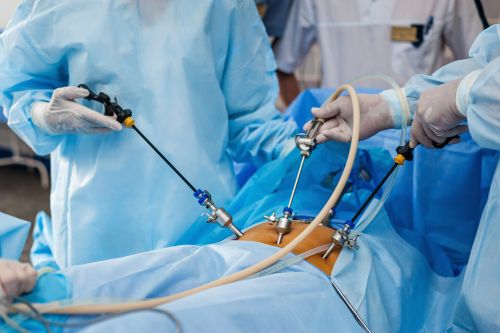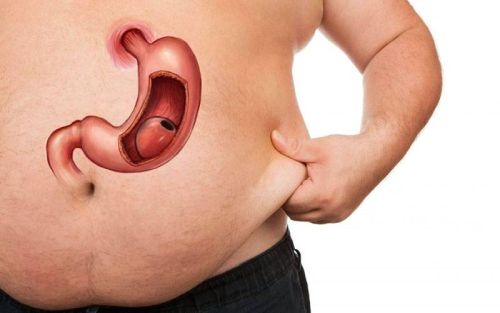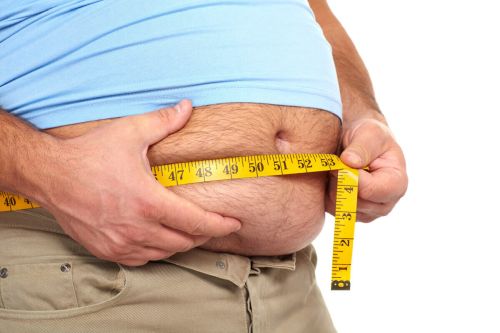It is a surgical procedure used in the treatment of obesity. A large part of the stomach is removed, creating a narrow tube in the shape of a banana. Thus, the stomach volume is reduced, and the person feels full with less food. Gastric sleeve surgery accelerates weight loss and contributes to the treatment of diseases such as diabetes. It is usually performed laparoscopically, and the recovery process is quick. Post-operative healthy eating and follow-up are important.
Gastric Sleeve Surgery In Which Situations Is It Performed?
 Individuals with a body mass index over 40 fall into the "morbidly obese" category. Gastric sleeve surgery is recommended for obesity at this level due to serious health risks. It is also recommended for people with a BMI between 35-40 who have additional health problems such as diabetes, high blood pressure, and heart disease. This surgery also contributes to the improvement of these additional diseases. It is an option for individuals who have not been able to lose weight despite long-term diet and exercise attempts. It helps achieve permanent weight loss. Excess weight can lead to lack of self-confidence, social withdrawal, or depression. For individuals experiencing these situations, it can also support psychological recovery. It is deemed suitable for individuals aged 18-65. However, in some special cases, it can also be performed on younger or older individuals. It is important for the patient to be psychologically ready for the surgery process. The general health condition should be at a level that can withstand surgery. A detailed evaluation is performed before the surgical intervention. Successful results are achieved in individuals who accept to change their dietary habits after gastric sleeve surgery. For individuals without serious chronic diseases such as heart and lung diseases, the surgical intervention is planned more safely. These conditions necessitate the surgery to improve the individual's health and reduce obesity-related complications. However, a detailed evaluation process is essential for each patient.
Individuals with a body mass index over 40 fall into the "morbidly obese" category. Gastric sleeve surgery is recommended for obesity at this level due to serious health risks. It is also recommended for people with a BMI between 35-40 who have additional health problems such as diabetes, high blood pressure, and heart disease. This surgery also contributes to the improvement of these additional diseases. It is an option for individuals who have not been able to lose weight despite long-term diet and exercise attempts. It helps achieve permanent weight loss. Excess weight can lead to lack of self-confidence, social withdrawal, or depression. For individuals experiencing these situations, it can also support psychological recovery. It is deemed suitable for individuals aged 18-65. However, in some special cases, it can also be performed on younger or older individuals. It is important for the patient to be psychologically ready for the surgery process. The general health condition should be at a level that can withstand surgery. A detailed evaluation is performed before the surgical intervention. Successful results are achieved in individuals who accept to change their dietary habits after gastric sleeve surgery. For individuals without serious chronic diseases such as heart and lung diseases, the surgical intervention is planned more safely. These conditions necessitate the surgery to improve the individual's health and reduce obesity-related complications. However, a detailed evaluation process is essential for each patient.
Gastric Sleeve Surgery How Is It Performed?
 The patient is evaluated for obesity, metabolic conditions, and associated diseases. Tests such as blood tests, endoscopy, ECG, and lung function tests are performed. Consultations with a dietitian and psychologist are provided. Training is given for adaptation after gastric sleeve surgery. The anesthesiologist evaluates the patient's health status before the surgical intervention. On the day of surgery, the patient is asked to fast for at least 8 hours. An intravenous line is prepared for the administration of drugs and fluids during surgery. The procedure is performed under general anesthesia, with the patient completely asleep. 4-5 small incisions are made, and surgical instruments are inserted through these incisions. Approximately 80% of the stomach is cut and removed using an instrument called a stapler. The remaining stomach takes the shape of a thin, long tube. The staple line is checked for leaks. This is ensured with air and fluid tests. The areas where the surgical instruments were inserted are closed with stitches and bandages. After the surgery, the patient is observed in the intensive care unit for a while. Painkillers and intravenous fluid support are provided. The patient is encouraged to walk early to prevent blood clotting after the surgery. Liquid foods are started on the first day after the surgery. The patient is discharged 2-4 days later and informed about the nutrition plan. Gastric sleeve surgery is a serious surgical intervention that requires careful preparation and regular follow-up. Adapting to lifestyle changes after surgery significantly increases the success rate.
The patient is evaluated for obesity, metabolic conditions, and associated diseases. Tests such as blood tests, endoscopy, ECG, and lung function tests are performed. Consultations with a dietitian and psychologist are provided. Training is given for adaptation after gastric sleeve surgery. The anesthesiologist evaluates the patient's health status before the surgical intervention. On the day of surgery, the patient is asked to fast for at least 8 hours. An intravenous line is prepared for the administration of drugs and fluids during surgery. The procedure is performed under general anesthesia, with the patient completely asleep. 4-5 small incisions are made, and surgical instruments are inserted through these incisions. Approximately 80% of the stomach is cut and removed using an instrument called a stapler. The remaining stomach takes the shape of a thin, long tube. The staple line is checked for leaks. This is ensured with air and fluid tests. The areas where the surgical instruments were inserted are closed with stitches and bandages. After the surgery, the patient is observed in the intensive care unit for a while. Painkillers and intravenous fluid support are provided. The patient is encouraged to walk early to prevent blood clotting after the surgery. Liquid foods are started on the first day after the surgery. The patient is discharged 2-4 days later and informed about the nutrition plan. Gastric sleeve surgery is a serious surgical intervention that requires careful preparation and regular follow-up. Adapting to lifestyle changes after surgery significantly increases the success rate.
Gastric Sleeve Surgery Post-Operative Precautions
 Immediately after surgery, only liquid foods should be consumed for the first 2-3 weeks. Water, broth, soup, and unsweetened compotes should be preferred. After the 3rd week, a transition to pureed foods can be made. Yogurt, vegetable purees, and soft-textured foods are recommended. Although solid foods can be introduced from the 5th-6th week onwards, portions should be kept small. Eating slowly and chewing thoroughly is important. At least 1.5-2 liters of water should be consumed daily. However, drinking water with meals should be avoided. After gastric sleeve surgery, some vitamin and mineral deficiencies may occur. Supplements such as B12, iron, vitamin D, and calcium should be taken regularly as recommended by the doctor. It is important to get enough protein. If necessary, protein powders can be used for support. Light walks are recommended within the first 1-2 weeks. This speeds up recovery and regulates blood circulation. Light-paced sports and regular exercises can be started after 4-6 weeks. However, heavy exercises should be avoided. Developing a habit of exercise is necessary to maintain weight control in the future. Some patients may experience psychological eating urges in the post-operative period. This may require psychological support. Working with a dietitian is beneficial to avoid reverting to old eating habits. Reflux and nausea may occur in the early stages. Medications recommended by the doctor should be used for this. Attention should be paid to the hygiene of the surgical site. Protection against the risk of infection should be ensured. A doctor should be consulted in case of sudden pain and fever. Regular doctor check-ups should not be neglected after gastric sleeve surgery. Blood tests and general health evaluations should be conducted. Smoking delays wound healing and can cause stomach problems. It is advised to quit smoking before and after the surgical intervention. Alcohol consumption should be avoided, especially for the first 6 months. Alcohol can harm the stomach and cause vitamin deficiencies.
Immediately after surgery, only liquid foods should be consumed for the first 2-3 weeks. Water, broth, soup, and unsweetened compotes should be preferred. After the 3rd week, a transition to pureed foods can be made. Yogurt, vegetable purees, and soft-textured foods are recommended. Although solid foods can be introduced from the 5th-6th week onwards, portions should be kept small. Eating slowly and chewing thoroughly is important. At least 1.5-2 liters of water should be consumed daily. However, drinking water with meals should be avoided. After gastric sleeve surgery, some vitamin and mineral deficiencies may occur. Supplements such as B12, iron, vitamin D, and calcium should be taken regularly as recommended by the doctor. It is important to get enough protein. If necessary, protein powders can be used for support. Light walks are recommended within the first 1-2 weeks. This speeds up recovery and regulates blood circulation. Light-paced sports and regular exercises can be started after 4-6 weeks. However, heavy exercises should be avoided. Developing a habit of exercise is necessary to maintain weight control in the future. Some patients may experience psychological eating urges in the post-operative period. This may require psychological support. Working with a dietitian is beneficial to avoid reverting to old eating habits. Reflux and nausea may occur in the early stages. Medications recommended by the doctor should be used for this. Attention should be paid to the hygiene of the surgical site. Protection against the risk of infection should be ensured. A doctor should be consulted in case of sudden pain and fever. Regular doctor check-ups should not be neglected after gastric sleeve surgery. Blood tests and general health evaluations should be conducted. Smoking delays wound healing and can cause stomach problems. It is advised to quit smoking before and after the surgical intervention. Alcohol consumption should be avoided, especially for the first 6 months. Alcohol can harm the stomach and cause vitamin deficiencies.


